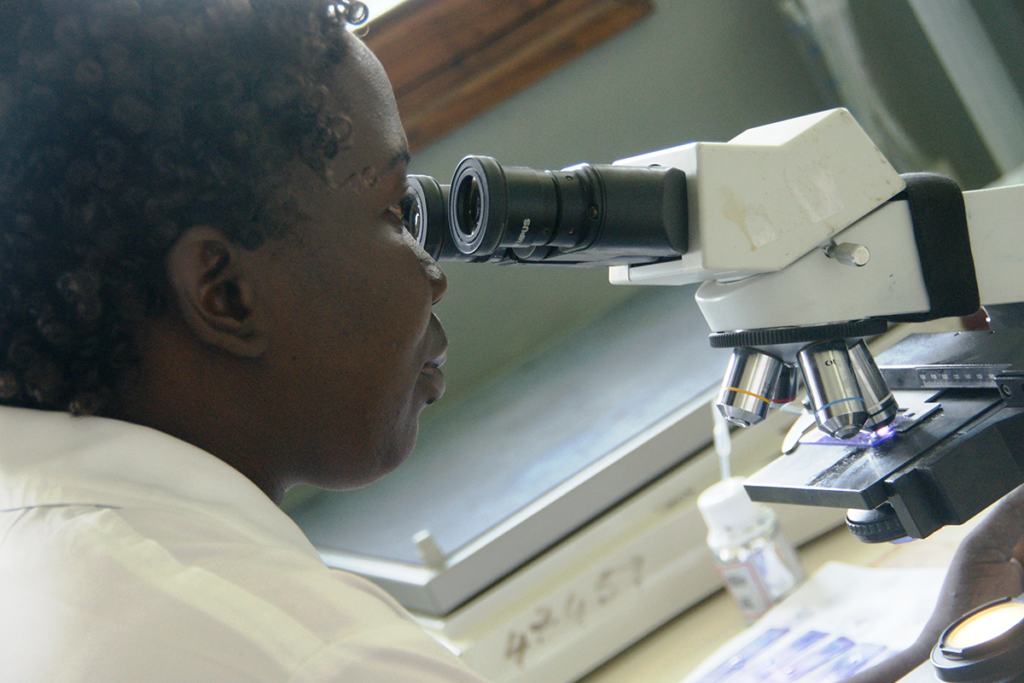Tuberculosis (TB) is a top 10 global killer. HIV/AIDS no longer tops the list thanks to a global response focused on diagnosis and treatment. TB, however, remains one of the world’s deadliest infectious diseases and its impact is disproportionately felt in low- and middle-income countries. According to the World Health Organization (WHO), more than 95% of TB deaths occur in these resource-limited settings.
Despite the scary statistics, progress has been made over the last few decades. Diagnosis and treatment saved more than 50 million lives between 2000 and 2016. The public health community built on that foundation and adopted the End TB strategy, which aims to end the epidemic by 2030 as part of the Sustainable Development Goals. The strategy uses a blueprint based on three pillars: 1) integrated, patient-centered care and prevention, 2) bold policies and supportive systems, and 3) intensified research and innovation.
Most readers might rightfully think that controlling TB is simply about making sure patients receive their medication, but there are other spokes in the wheel working to create a comprehensive and effective response to the epidemic. These equally important spokes can include things like transporting viable patient samples to the testing laboratory, using appropriate medications in proper doses, or developing shorter treatment regimens. In the spirit of rolling a complete wheel down the road, I want to highlight three innovative research papers that address these sometimes overlooked issues within resource-limited settings.
Expanding transport options to improve diagnosis
Before TB patients can be treated, they must be accurately diagnosed using specialized, often secondary, referral laboratories. These laboratories are frequently centralized because of biosafety requirements in resource-limited environments, thus requiring a temperature-controlled cold-chain preserved over long-distances. Utilizing a cold-chain from the point of collection until testing is standard practice. It prevents contamination and helps ensure an accurate diagnosis. Sustaining a cold-chain, though, presents a daunting challenge.
A study from Mozambique evaluates the ability of an innovative substance, OMNIgene.SPUTUM (or simply OM-S), to eliminate the need for a cold-chain when applied to patient samples before transport. Azam, Cadir, et al. assess contamination rates and viability of OM-S-treated samples using three different processing techniques as compared to the local standard decontamination procedure in same-day and five-day arms. The five-day arm allowed samples to sit at room temperature before processing to mirror long-distance travel with cold-chain interruptions.
Findings from both arms show that when OM-S is added to samples, it is more effective at lowering contamination rates, increasing TB recovery when used with the Lowenstein Jensen (LJ) testing medium, and maintaining viability for a longer time without a cold-chain. These findings are great news for settings that require the use of referral laboratories and can help shape future TB elimination activities critical for detecting and treating every TB case.
Understanding prescribing practices to prevent drug resistance
China has the world’s third largest TB population and accounts for a high-burden of multidrug-resistant TB (MDR-TB). Many different treatment options are available to patients but specific guidelines exist to prevent the irrational prescription of medications, which can contribute to drug resistance. In a diverse and complex setting like China, understanding what medications have been prescribed is an important tool for preventing drug resistance.
Findings from China’s largest known clinical TB audit by Xu, Chen, et al. show an astonishing 189 different regimens prescribed to treat patients. Even more surprising to me was the high proportion of conventional patients receiving second-line drugs, the only treatment option available for hard-to-treat, drug resistant patients. This misuse of second-line treatments can render them useless and leave no treatment recourse. Having no available treatment options means we risk the spread of untreatable TB. That’s a frightening prospect in our ever-interconnected world.
Data from the audit can now be used to push for the (re)training of local medical staff on appropriate prescribing practices. Using clinical audits like this to understand these practices is one solution for improving the quality of TB services. Taking action post-audit though is key to preventing the spread of drug resistance globally.
Shortening treatments to improve health outcomes
Prescribing the right treatment for patients is critical, but getting patients to adhere to the drugs is equally important. Reducing the length of time and amount of drugs a patient takes improves the likelihood that they will complete the prescribed treatment and improve their health outcomes. Fewer drugs also mean fewer costs. A win-win in my book.
Poor adherence leads to treatment failure which fuels the rise of drug resistance. Given China’s heavy TB burden, wouldn’t a shorter course of treatment then serve as a significant achievement? Yes! Gao, et al. are conducting a clinical trial within the framework of the China Tuberculosis Clinical Trials Consortium (CTCTC) project to explore the efficacy and safety of shortening the standard 6-month treatment regimen. (Learn more about the CTCTC and other consortia.) Newly diagnosed patients (without MDR-TB) are randomly assigned to one of two shortened treatment options with a third, standard 6-month option serving as a control. Results are forthcoming, but you can read about the methodology now.
Shortening the course of treatment for MDR-TB patients has already shown to be possible. Shortening the treatment for conventional patients, if possible, would represent a huge advancement in the fight to manage and control the often-deadly disease.
As the public health community implements the End TB strategy, keeping in mind all the spokes in the wheel can help shape a more comprehensive and efficient global response. Tailoring local responses to improve sample transport, to ensure appropriate prescribing practices, and to explore shorter treatment options can amplify diagnostic and treatment intervention efforts in resource-limited settings.
Photo caption: A laboratory technician in Mozambique checks for tuberculosis (TB).
Photo credit: © 2011 Arturo Sanabria, Courtesy of Photoshare



